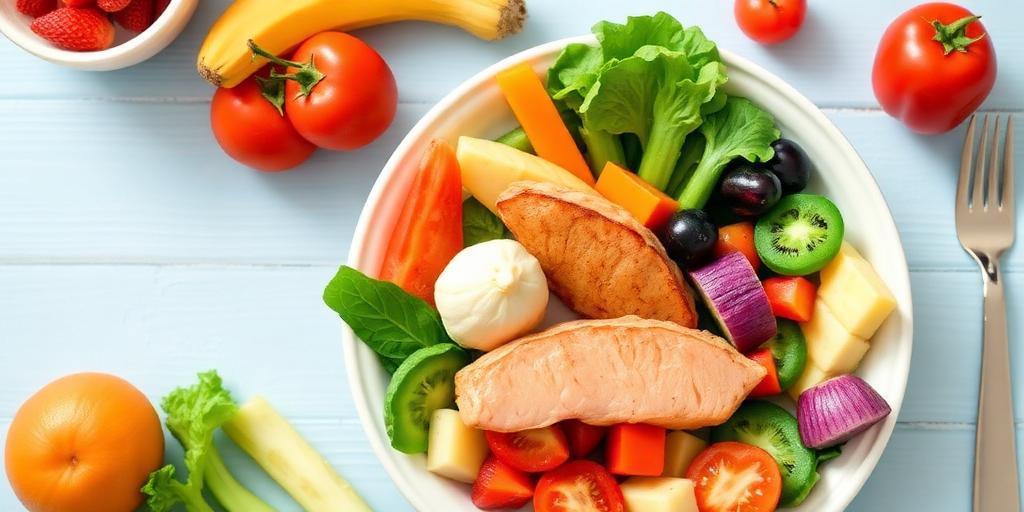Healthy Cooking Methods to Preserve Nutrients
Maintaining a healthy diet is crucial for overall well-being, and the way you cook your food plays a significant role in retaining its nutritional value. Different cooking methods can either preserve or deplete the vitamins, minerals, and antioxidants present in your ingredients. This guide explores various cooking techniques that help you maximize the nutrient content of your meals.
1. Steaming
Steaming is one of the best methods for preserving nutrients. It involves cooking food with steam from boiling water, avoiding direct contact with the water itself. This method helps retain water-soluble vitamins like Vitamin C and B vitamins, which are often lost when boiling.
- How to Steam: Use a steamer basket over a pot of boiling water. Ensure the food is above the water level. Cover the pot and cook until tender.
- Best For: Vegetables like broccoli, spinach, and carrots, as well as fish and poultry.
2. Stir-Frying
Stir-frying involves cooking food quickly over high heat with minimal oil. This method can preserve nutrients due to the short cooking time, which reduces the breakdown of vitamins. The key is to keep the vegetables moving to ensure even cooking without overcooking.
- How to Stir-Fry: Heat a wok or large pan with a small amount of oil. Add your ingredients and stir continuously until they are cooked but still crisp.
- Best For: Vegetables, lean proteins like chicken and tofu, and dishes where you want to maintain the texture and color of the ingredients.
3. Grilling
Grilling can be a healthy way to cook, as it often requires little to no added fats. The high heat sears the food, locking in flavors and nutrients. However, it's important to avoid charring the food, as charred portions can contain harmful compounds.
- How to Grill: Preheat your grill to a medium-high temperature. Grill your food until it reaches the desired internal temperature, flipping occasionally to ensure even cooking.
- Best For: Meats, poultry, fish, and vegetables like bell peppers, zucchini, and eggplant.
4. Baking
Baking involves cooking food in an oven with dry heat. While it can reduce some nutrient content, it generally retains more nutrients than boiling or frying. Baking at lower temperatures can further help preserve vitamins and minerals.
- How to Bake: Preheat your oven to the desired temperature. Place your food on a baking sheet or in a baking dish and cook until done.
- Best For: Vegetables like potatoes and squash, as well as meats, casseroles, and baked goods.
5. Microwaving
Microwaving is often criticized, but it can be a nutrient-friendly cooking method. The short cooking times and minimal water usage help retain vitamins and minerals. Ensure you use microwave-safe containers to avoid leaching harmful chemicals into your food.
- How to Microwave: Place your food in a microwave-safe container with a small amount of water if necessary. Cook on high for short intervals, checking frequently to avoid overcooking.
- Best For: Vegetables, reheating leftovers, and quick meals.
6. Poaching
Poaching involves cooking food gently in liquid, usually water, broth, or sauce. This method is excellent for delicate foods that can easily fall apart with more aggressive cooking techniques. It helps retain moisture and nutrients.
- How to Poach: Bring your liquid to a gentle simmer. Submerge your food in the liquid and cook until done.
- Best For: Eggs, fish, and poultry.
7. Slow Cooking
Slow cooking, typically done in a slow cooker or crock-pot, involves cooking food at low temperatures for an extended period. While some nutrients may be lost over the long cooking time, the method is great for tenderizing tough cuts of meat and infusing flavors, which can make healthy meals more appealing.
- How to Slow Cook: Place your ingredients in a slow cooker, add liquid if necessary, and cook on low or high heat for several hours.
- Best For: Soups, stews, and tough cuts of meat.
Conclusion
Choosing the right cooking method can significantly impact the nutritional value of your meals. Steaming, stir-frying, grilling, baking, microwaving, poaching, and slow cooking each have their benefits for preserving nutrients. By understanding these methods and incorporating them into your cooking routine, you can ensure that you and your family are getting the most out of your food.









